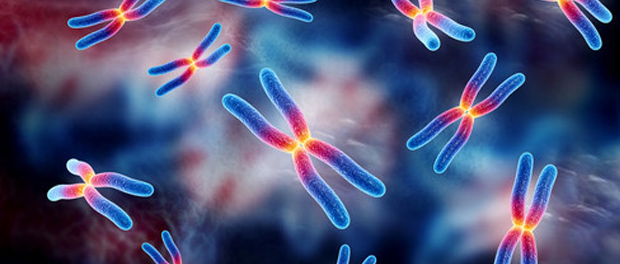
New research has been suggesting that parents can transmit changes to their gene expression to their children. The heritable changes occur as a result of environmental stresses and are known as epigenetic modifications. A previous article covered the epigenetic transfer of nutrition “memory” across several generations. Now, a recent study by researchers from the University of California in Santa Cruz, demonstrates the transferring of epigenetic memory across generations as well as from one cell to another during early development.
The new study, published in Science, looked at a well-studied, common epigenetic modification – histone methylation. They focused on histone H3, a protein involved in DNA packaging. Specifically, the researchers investigated the methylation of histone H3 on Lys27 (H3K27me) by Polycomb repressive complex 2 (PRC2). This has previously been shown to repress or turn off genes. This particular epigenetic mark is widespread and can be found in every multicellular animal – from the small roundworm investigated in the current study, C. elegans, to humans.

Credit: Laura J. Gaydos
Susan Strome, the corresponding author and professor of molecular, cell and developmental biology at UC Santa Cruz said, “There has been ongoing debate about whether the methylation mark can be passed on through cell divisions and across generations, and we’ve now shown that it is.”
Along with first author Laura Gaydos, who led the study for her Ph.D. thesis, and co-author Wenchao Wang, the team created worms in the lab with a mutation that knocks out the enzyme that makes the methylation mark. They then bred the mutated C. elegans with normal C. elegans. The researchers used fluorescent labeling to keep track of the marked and unmarked chromosomes from sperm and egg cells to the embryo cells that undergo division after fertilization.
When the mutant egg cells were fertilized by normal C. elegans sperm, the embryos had six chromosomes that were methylated (from the sperm) and six “naked” chromosomes that were unmarked (from the egg).
During embryo development, the chromosomes are replicated and the cells divide. The scientists discovered when a chromosome with a methylation mark replicates, the mark is also found on the two daughter chromosomes. Without the enzyme (PRC2) necessary for histone methylation, however, the methylation marks are diluted over time after each cell division.
“The mark stays on the chromosomes derived from the initial chromosome that had the mark, but there’s not enough mark for both daughter chromosomes to be fully loaded,” Strome said. “So the mark is bright in a one-cell embryo, less bright after the cell divides, dimmer still in a four-cell embryo, and by about 24 to 48 cells we can’t see it anymore.”
They then repeated the same experiment, this time using mutant C. elegans sperm to fertilize normal C. elegans eggs. PRC2 is not typically present in sperm cells, which don’t contribute much more to the embryo than their chromosomes. However, PRC2 is present in egg cells. They found the same results as before, with six chromosomes that were methylated (this time from the egg) and six “naked” chromosomes that were unmarked (this time from the sperm). But now, the embryos also had the enzyme.
“Remarkably, when we watch the chromosomes through cell divisions, the marked chromosomes remain marked and stay bright, because the enzyme keeps restoring the mark, but the naked chromosomes stay naked, division after division,” Strome said. “That shows that the pattern of marks that was inherited is being transmitted through multiple cell divisions.”
Strome indicated that the investigators’ findings about the inheritance of histone methylation marks in C. elegans also applies to other organisms, although various organisms utilize the repressive marker to regulate different genes at different times of development. The same enzyme is used by all animals to make the same methylation mark as an indicator for gene repression. Strome shared that her colleagues studying epigenetics related to mice and humans are excited about the study’s results.
“Transgenerational epigenetic inheritance is not a solved field–it’s very much in flux,” she said. “There are dozens of potential epigenetic markers. In studies that document parent-to-child epigenetic inheritance, it’s not clear what’s being passed on, and understanding it molecularly is very complicated. We have a specific example of epigenetic memory that is passed on, and we can see it in the microscope. It’s one piece of the puzzle.”
Source: Learn all about it and read more about their findings here: L. J. Gaydos, W. Wang, S. Strome. H3K27me and PRC2 transmit a memory of repression across generations and during development. Science. 2014.
References: University of California Santa Cruz. Study shows how epigenetic memory is passed across generations. 2014.


